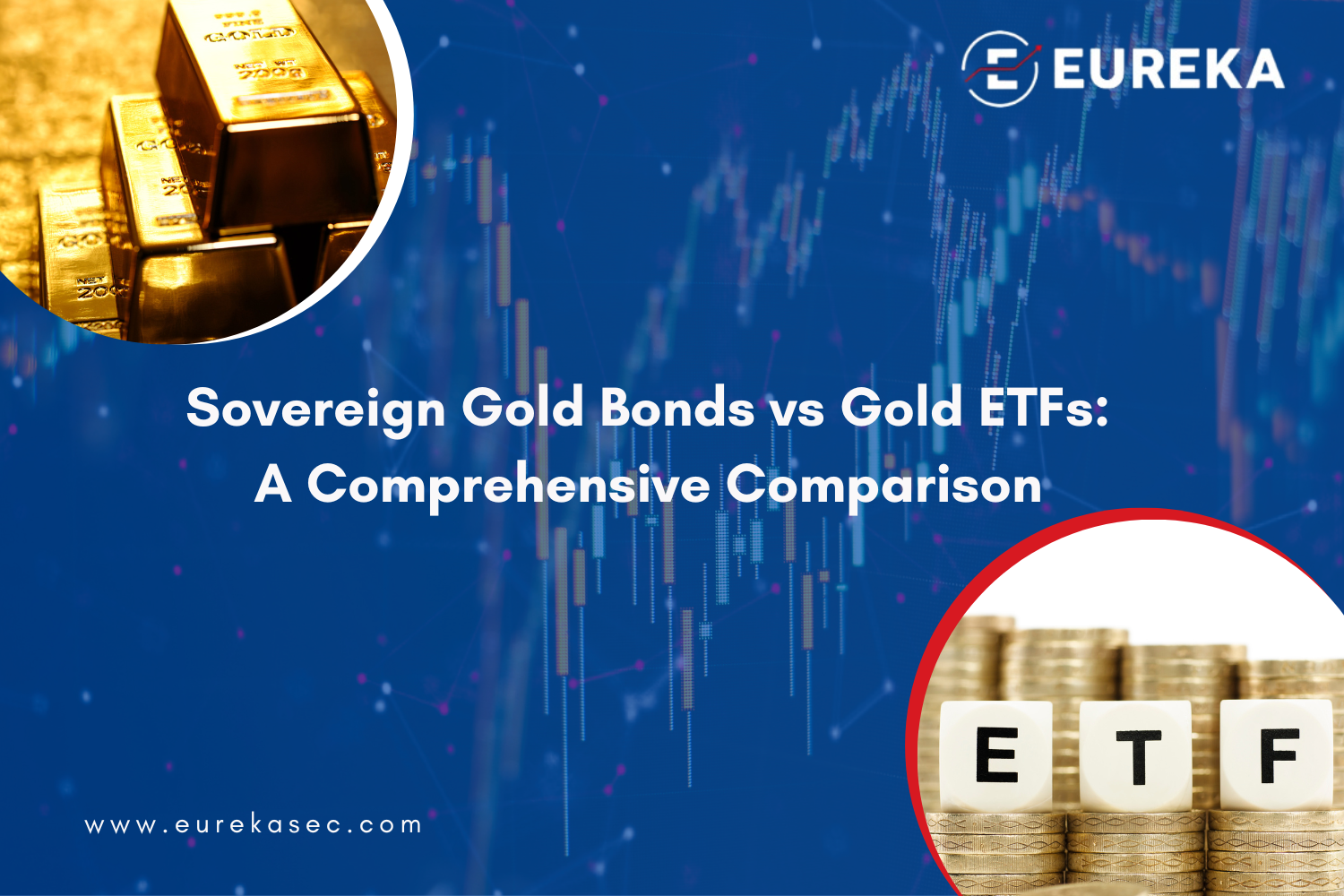
Gold has been a significant part of India’s cultural and economic fabric, treasured not just as a symbol of prosperity and status, but also as a reliable investment. Traditionally, gold was purchased in physical form – jewellery, coins, or bars. However, today, we have sophisticated investment vehicles such as Sovereign Gold Bonds (SGBs) and Gold Exchange Traded Funds (ETFs). Both of these offer a practical alternative to owning physical gold, but choosing between Sovereign Gold Bonds in India and Gold ETFs can be a complex decision. Here, we’ll present a comprehensive comparison between Sovereign Gold Bonds vs ETFs.
What are Sovereign Gold Bonds and ETFs?

Sovereign Gold Bonds India, introduced by the Reserve Bank of India (RBI), are government securities denominated in grams of gold. They are substitutes for holding physical gold. Investors pay the issue price in cash, and the bonds are redeemed in cash on maturity.
Gold ETFs, on the other hand, are mutual fund schemes that invest in gold of 99.5% purity. The investment objective of gold ETFs is to provide returns that, before expenses, closely correspond to the returns provided by the price of gold.
Return On Investment
When it comes to Sovereign Gold Bonds vs ETFs, the returns can vary. Sovereign Gold Bonds offer a fixed interest rate of 2.5% per annum over and above the gold price returns, making them attractive for investors looking for regular income.
Gold ETFs, however, do not provide any fixed returns. Their return is directly linked to the performance of gold prices. If the price of gold increases, the NAV of the gold ETF increases and vice versa.
Safety
In terms of safety, both Sovereign Gold Bonds and Gold ETFs are secure. SGBs are backed by the government of India, making them one of the safest investment options.
Similarly, Gold ETFs are also safe as they are regulated by the Securities and Exchange Board of India (SEBI), ensuring transparency and regular disclosures. However, Gold ETFs are exposed to market risks associated with gold prices.
Liquidity
Gold ETFs score higher in terms of liquidity. They can be bought and sold on the stock exchange at market prices any time during market hours, just like any other stock.
Conversely, Sovereign Gold Bonds have a maturity period of eight years, with an exit option from the fifth year. However, they can be traded on the stock exchange within a fortnight of the issuance date.
Ease of Purchase and Storage
In the comparison of Sovereign Gold Bonds vs ETFs, the ease of purchase and storage can be a significant deciding factor. Sovereign Gold Bonds in India can be purchased from designated banks, Stock Holding Corporation of India Limited (SHCIL), post offices, and recognized stock exchanges either directly or through agents. The storage is also hassle-free, as the SGBs are held in the books of the RBI or in demat form, eliminating the risks associated with the storage of physical gold.
Gold ETFs, on the other hand, are traded on stock exchanges and require a demat and trading account for purchase. This could be a hurdle for individuals who do not have a trading account. Additionally, the cost of maintaining a demat account can add to the overall cost of the investment.
Expense Ratio
When looking at Sovereign Gold Bonds vs ETFs, the cost of investment, often termed as the expense ratio, can influence an investor’s decision. Gold ETFs have an expense ratio which varies from one fund house to another and can be up to 1% of the total investment amount. This includes managing the fund, storing the gold, and other operational costs.
Sovereign Gold Bonds, on the other hand, do not have an expense ratio, which makes them a cost-effective option in comparison. Therefore, if cost-effectiveness is a priority, then SGBs might be a better choice.
Loan Collateral
Both Sovereign Gold Bonds and Gold ETFs can be used as collateral for loans. The loan-to-value (LTV) ratio would depend on the terms and conditions of the specific bank or financial institution. This can be a useful feature during times of financial stress.
Investment Limits
There are also differences in the investment limits for Sovereign Gold Bonds and Gold ETFs. For SGBs, the maximum limit is 4 kg for individuals, 4 kg for Hindu Undivided Family (HUF), and 20 kg for trusts and similar entities per fiscal year.
On the other hand, there are no such upper limits on the investment in Gold ETFs. This makes Gold ETFs a more flexible option for investors who wish to invest large amounts in gold.
Both Sovereign Gold Bonds and Gold ETFs offer unique benefits to investors looking to capitalize on the value of gold. The choice between the two depends on individual investment goals, risk tolerance, liquidity needs, and tax considerations. Sovereign Gold Bonds in India offer the dual benefit of price appreciation and periodic interest, making them an attractive option for those seeking regular income and tax benefits. However, Gold ETFs offer high liquidity and the flexibility to invest as per your convenience.
Eureka, as a trusted financial advisory, can provide personalized guidance based on your investment preferences, financial goals, and risk profile. Our team of expert financial advisors can help you navigate the complexities of investing in gold and can guide you in making an informed decision between Sovereign Gold Bonds vs ETFs.
Take your first step towards a more diversified and optimized portfolio. Invest in the right gold investment vehicle for you with Eureka. Connect with our experts today and begin your journey towards financial growth and security. Let’s unlock your financial future together with Eureka!
Remember, every journey begins with a single step. Take yours now with Eureka, your partner in prosperity.







